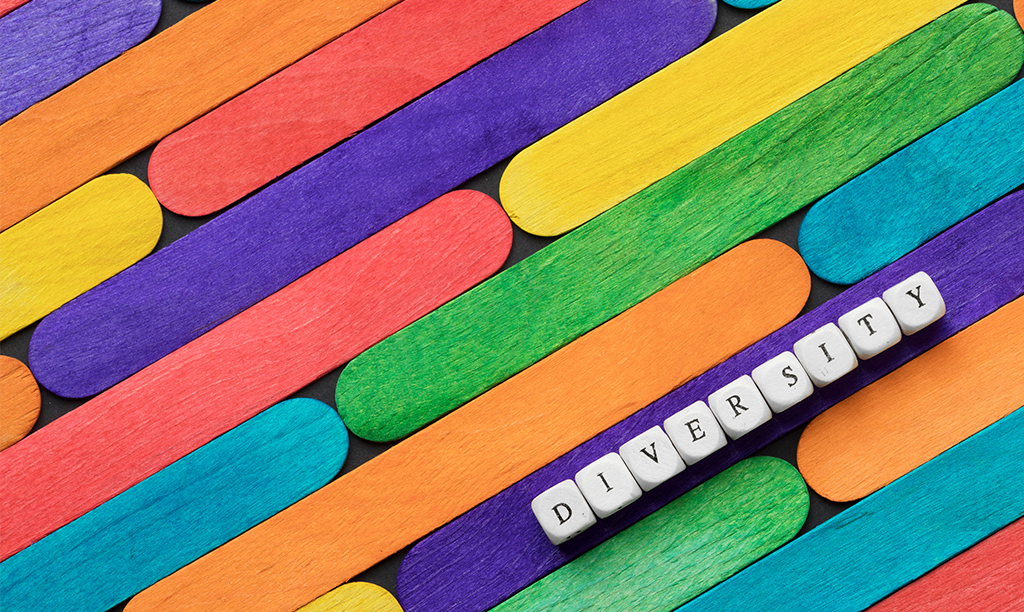Whiplash Team, April 11th 2025
Inclusive design: accessible and diverse visual identities
Inclusive design is an approach that removes access barriers and enriches the user experience by strengthening the emotional bond with traditionally underserved audiences. It involves creating visual identities that are both accessible and representative, from color palettes adapted for individuals with visual impairments to legible typefaces for diverse publics, and communication strategies that reflect diversity.
Inclusion has become an essential value in our society, especially for the new generations now entering the consumer market. It involves recognizing and respecting individual and collective differences, and removing physical, social, and cultural barriers so that everyone—regardless of origin, gender, abilities, or sexual orientation—can enjoy the same opportunities and participate fully. This philosophy promotes equity and celebrates diversity, creating spaces and practices that highlight the richness everyone contributes.
For brands, inclusive design—focusing on removing obstacles and improving the user experience—is particularly significant. A recent report by ILUNION points out that inclusive design involves understanding everyone’s needs so that any person can access materials without requiring special adaptations, and notes that this type of design creates equitable experiences that foster a genuine connection with the audience.
Designing for inclusion means keeping in mind that around 15% of the world’s population lives with some form of disability—ranging from visual and auditory challenges to motor and cognitive difficulties. Ignoring these realities can exclude millions of people from a brand’s communication.
Moreover, our societies are increasingly diverse in terms of culture, gender, age, and abilities. Designing without considering that diversity may end up alienating part of the audience. Conversely, an inclusive approach demonstrates a brand’s commitment to all its users and strengthens its reach.
Color palettes adapted for everyone
Color is a central element in any visual identity, yet not everyone perceives color in the same way. It is estimated that about 300 million people worldwide experience some form of color blindness, roughly 8% of men and about 0.5% of women. For these individuals, certain color combinations are indistinguishable.
An inclusive design should anticipate these differences. For instance, avoid relying on a single color to convey important information (instead adding tone contrasts, textures, or alternative shapes). The W3C accessibility guidelines further recommend a minimum contrast ratio of 4.5:1 between text and background to ensure on-screen legibility. This means that font and background colors must differ sufficiently in brightness so the text remains clearly visible, even for people with low vision or color blindness.
Adopting accessible palettes does not mean sacrificing brand aesthetics; rather, it involves selecting shades with enough contrast and testing them in color vision simulators. Some companies use specific tools to verify that their logos and graphics work properly in altered-vision modes.
It’s not about restricting creativity, but rather enhancing its effectiveness: a well-thought-out color scheme allows more people to appreciate the visual identity. Ultimately, an inclusive corporate color communicates the brand’s values clearly to every set of eyes.
Readable and inclusive typefaces
Typography is another pillar of inclusive design. An unsuitable font choice can make reading difficult for people with reduced vision or challenges such as dyslexia. Studies indicate that some standard typefaces—like Tahoma, Calibri, Helvetica, Arial, Verdana, or Times New Roman—are considered among the most accessible on the web due to their high legibility.
Typographic legibility becomes particularly relevant in a world where we consume content on small screens. A prime example is the BBC, which chose to create its own inclusive typeface called BBC Reith. The motivation was that its traditional fonts (like Helvetica or Gill Sans) did not perform well in modern digital environments.
In developing Reith, the BBC ran tests with user groups of various ages and abilities, including people with dyslexia and visual impairment, comparing how they read Reith against other typefaces. The result was a type family optimized for maximum readability across different screen sizes and contexts, outperforming previous fonts in clarity.
Additionally, using suitable font sizes, adequate line spacing, and enough kerning are complementary practices that help older readers, people with low vision, or anyone reading under suboptimal conditions.
Inclusive and representative visual communication
Truly inclusive design goes beyond colors and letters: it includes how we communicate visually and what content we choose to represent the brand.
It’s important to remember that communication must be accessible in its format. For example, a video campaign should include subtitles or sign language interpretation for deaf viewers, and all digital graphic materials should include descriptive alt text for blind users who rely on screen readers, as recommended in the aforementioned ILUNION report.
These additions ensure that no one is left out of understanding the message due to a sensory disability. Likewise, using clear language in written texts—avoiding unnecessary jargon—is crucial so that people with different cognitive abilities or different native languages can follow the content without difficulty.
Including multiple perspectives also relates to the brand’s language. Practicing inclusive language means using terms that respect how people self-identify, avoiding discriminatory or outdated expressions. Modern editorial guidelines emphasize that inclusive language “helps us understand and be understood; shows we listen and care; and helps build trust.”
Brands that embrace inclusive design
Many leading brands have shown that inclusive design is not only possible but also beneficial. A noteworthy example is Coca-Cola, which adapted its famous “share a Coke” campaign to include blind consumers. In Mexico and Argentina, they launched limited-edition cans and bottles printed in Braille, allowing visually impaired customers to read the names on the packaging.
Another standout example is Fenty Beauty, the cosmetics brand founded by Rihanna, which upon launching in 2017 offered 40 foundation shades to encompass practically every skin tone. This commitment to diversity was an overwhelming success: the company earned 100 million dollars in its first 40 days and received acclaim for reaching women who had long felt “treated as if they didn’t exist” by the beauty industry.
Inclusion means addition
In each of these cases, inclusion boosted the brand’s image. Far from diluting the corporate identity, it strengthened it, associating the brand with values of empathy, innovation, and respect.
Thus, implementing a design that focuses on inclusion and diversity is not just a matter of meeting a checklist of technical requirements; it is about embracing a design philosophy in which every detail counts toward opening doors rather than closing them.
From the logo’s color to the typeface of a tagline and the imagery in a campaign, every element can be evaluated under the lens of inclusion. The result is more welcoming, accessible visual identities that truly reflect the world we live in. In practice, that translates to stronger brands capable of communicating effectively with diverse audiences.
As we have seen, inclusive design benefits everyone by creating richer, more empathetic, and more human brand experiences. In short, designing inclusively means designing with a view to the future.




